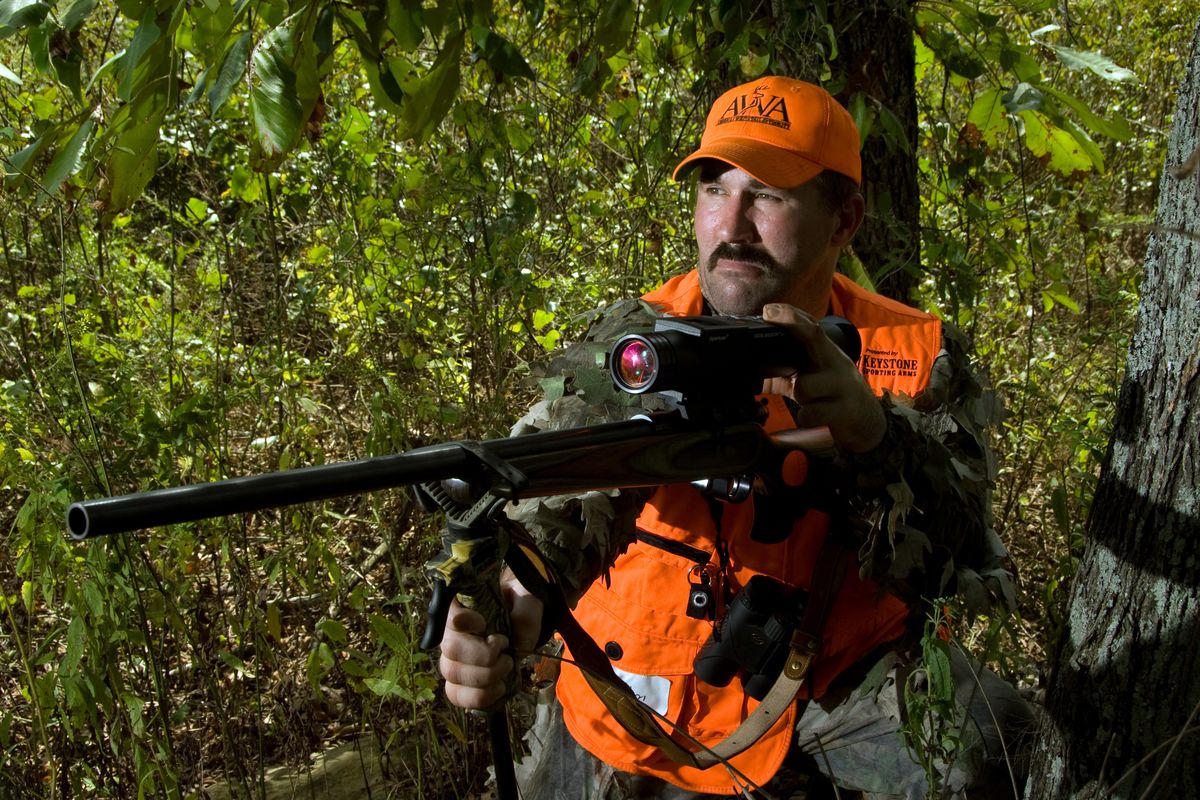Catch-and-release hunting contest made for cable TV

Each of the 40 hunters competing in the new made-for-TV Whitetail Pro Series will pull the trigger on up to 15 deer in three days of competition, yet not a drop of blood will be shed.
A hi-tech video rifle scope has given big-game hunters a means for “shoot-and-release” competition similar to the catch-and-release concept that launched the lucrative bass tournament industry.
“Hunters oppose contests that involve killing a lot of game, but a man who shoots one big buck isn’t necessarily the best hunter – he might just be the luckiest,” said Brian Lynn of Liberty Lake, who’s contracted to help facilitate the series competitions and online coverage.
With those factors in mind, Greg Koch, the Oklahoma wildlife manager and entrepreneur, founded the American Whitetail Authority. He drummed up interest from investors and television. The contests are tentatively scheduled to be broadcast this winter in 13 episodes on the Outdoor Channel.
Then Koch went on the road last spring, visiting all the Bass Pro Shops in 22 states to interview prospects to compete for the title of America’s best whitetail hunter.
The prize is a 2-foot-tall bronze bust of a whitetail buck.
“Koch got tired of watching TV shows that feature guys shooting big bucks on guided trips where somebody else does all the work to get him the shot,” Lynn said.
“He wanted to showcase the great but unknown hunters who don’t get the recognition and then pass on their knowledge to the other 10 million deer hunters out there.”
Key to the venture is the Elcan DigitalHunter, a $1,200 rifle scope-video recorder combo introduced by Raytheon Co. in 2005.
The scope records exactly what the hunter sees in the crosshairs as he aims and shoots.
“They’re shooting blanks, so when the judges see the white smoke in the video, they back up a frame to see exactly where the crosshairs where when the shot was fired,” Lynn said. “Shot placement is part of the score.”
Wildlife management also figures into the strategy competitors use to accumulate points.
“The competition isn’t just about big racks,” Lynn said, noting that hunters are rewarded for targeting some antlerless deer in their five-deer daily bag limit, with more points awarded for an old doe than for a young doe in peak reproductive years.
The first of four preliminary-round contests was held on public land in Kentucky in mid-September. The second was staged on a 13,000-acre ranch in Oklahoma.
This week the competition moves to a 15,000-acre ranch in Georgia followed by the last of the preliminary rounds on a 7,500-acre hunting preserve in Texas on Oct. 12-19.
Jason Verbeck of Spokane, the only competitor selected from the Western states, has been assigned to the Texas hunt.
Top qualifiers from the preliminary rounds will compete in the finals at the end of October in Mississippi.
“All 40 of the contestants are great hunters, but the first two events showed us there’s a learning curve to using these scopes,” Lynn said.
“In Oklahoma, a guy with 30 years of experience, who others considered one of the best of all the hunters, got excited about making his shot – and he forgot to turn on the scope’s video record button. That was the difference between winning and losing.
“After a day or so, the hunters get comfortable with the equipment, and they’re out there shooting videos of scenery, wild turkeys, bucks fighting and other stuff as though they’re like Marty Stouffer or Wild Kingdom or something.”
The scopes aren’t as user friendly as they could be, and maybe the competition will give Raytheon feedback needed to make improvements, insiders say.
The 10 hunters in each preliminary round get two days for scouting the hunting area followed by three full days of hunting. They are allowed five shots a day.
“Maybe it was the pressure, but one guy who’s hunted all over the world – he’s taken leopards in Africa, the whole deal – got so excited after he rattled-in two bucks that he shot one nine minutes before the contest official start time,” Lynn said. “He got a zero.”
“Competition and strategy figure in. So does the weather. The last competition saw 90 degrees during the scouting days, but on the first day of hunting it was cool and pouring rain. The guys with forethought in the way they placed their blinds and backup plans for a north wind fared better.”
The intensity of being in the field for five full days is a major part of the test.
“Anybody can luck into a big buck on a single-day hunt,” Lynn said. “But this contest is designed to honor the guys who can consistently get close to mature whitetails – one of the toughest tests for a hunter.”